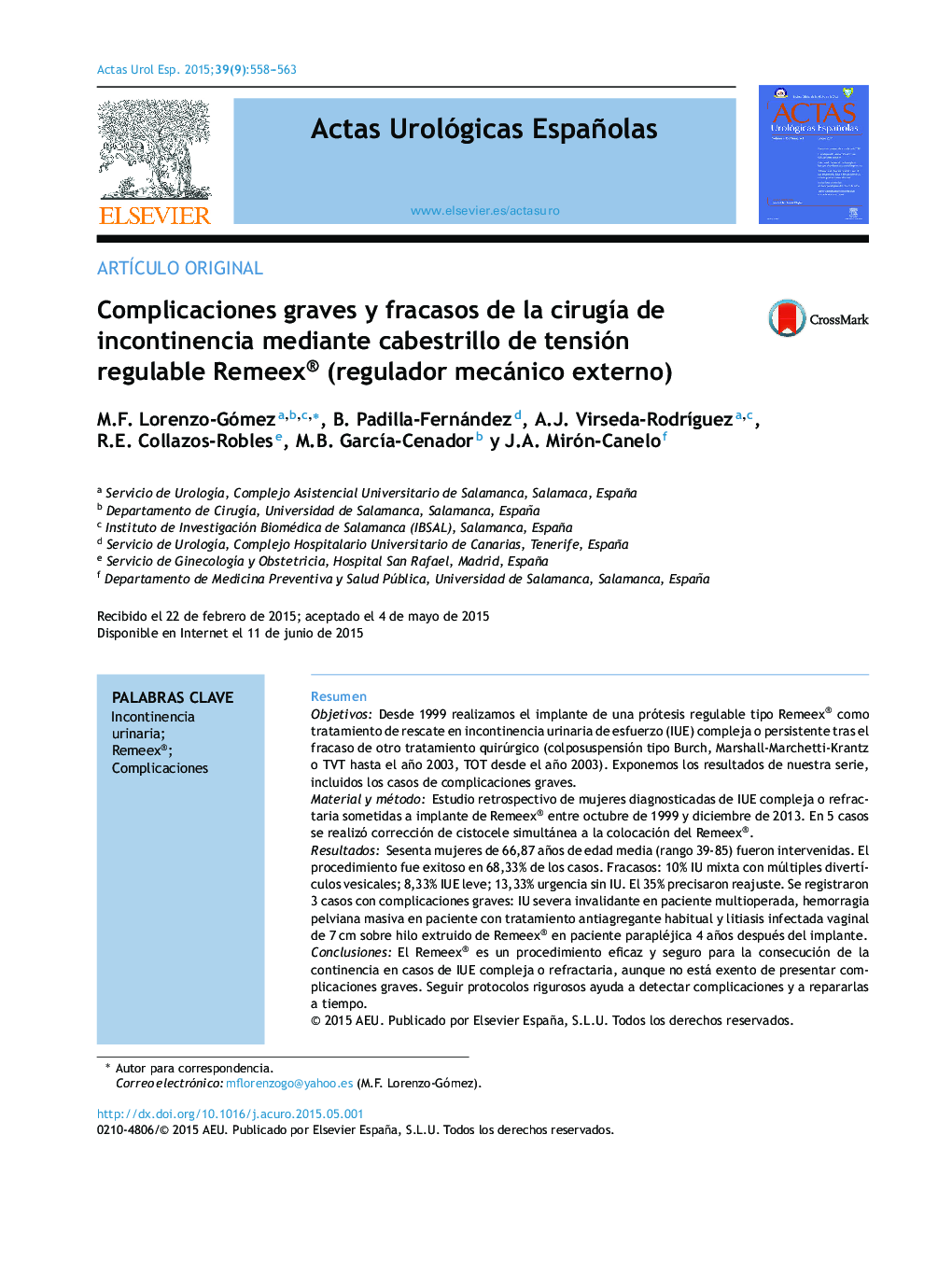| Article ID | Journal | Published Year | Pages | File Type |
|---|---|---|---|---|
| 3843231 | Actas Urológicas Españolas | 2015 | 6 Pages |
ResumenObjetivosDesde 1999 realizamos el implante de una prótesis regulable tipo Remeex® como tratamiento de rescate en incontinencia urinaria de esfuerzo (IUE) compleja o persistente tras el fracaso de otro tratamiento quirúrgico (colposuspensión tipo Burch, Marshall-Marchetti-Krantz o TVT hasta el año 2003, TOT desde el año 2003). Exponemos los resultados de nuestra serie, incluidos los casos de complicaciones graves.Material y métodoEstudio retrospectivo de mujeres diagnosticadas de IUE compleja o refractaria sometidas a implante de Remeex® entre octubre de 1999 y diciembre de 2013. En 5 casos se realizó corrección de cistocele simultánea a la colocación del Remeex®.ResultadosSesenta mujeres de 66,87 años de edad media (rango 39-85) fueron intervenidas. El procedimiento fue exitoso en 68,33% de los casos. Fracasos: 10% IU mixta con múltiples divertículos vesicales; 8,33% IUE leve; 13,33% urgencia sin IU. El 35% precisaron reajuste. Se registraron 3 casos con complicaciones graves: IU severa invalidante en paciente multioperada, hemorragia pelviana masiva en paciente con tratamiento antiagregante habitual y litiasis infectada vaginal de 7 cm sobre hilo extruido de Remeex® en paciente parapléjica 4 años después del implante.ConclusionesEl Remeex® es un procedimiento eficaz y seguro para la consecución de la continencia en casos de IUE compleja o refractaria, aunque no está exento de presentar complicaciones graves. Seguir protocolos rigurosos ayuda a detectar complicaciones y a repararlas a tiempo.
ObjectivesSince 1999, we have performed implantations of Remeex® adjustable prosthetics as rescue treatment for complex or persistent stress urinary incontinence (SUI) after failure of other surgical treatments (Burch colposuspension, Marshall-Marchetti-Krantz (MMK) or tension-free transvaginal tape [TVT] until 2003 and transobturator tape [TOT] since 2003). We present the results of our series, which include cases with severe complications.Material and methodRetrospective study of women diagnosed with complex or refractory SUI who underwent Remeex® implantation between October 1999 and December 2013. In 5 cases, we conducted cystocele correction in the same operation as the placement of the Remeex®.ResultsSixty women, with a mean age of 66.87 years (range 39-85), underwent operations. The procedure was successful in 68.33% of the cases. The failures consisted of the following: 10% of the women had mixed urinary incontinence (UI) with multiple bladder diverticula; 8.33% had mild SUI; and 13.33% had urgency urination without UI. Thirty-five percent required adjustments. We recorded 3 cases with severe complications: disabling severe UI in a patient who underwent multiple operations, massive pelvic hemorrhage in a patient undergoing standard antiplatelet therapy and infected vaginal calculi measuring 7 cm on an extruding Remeex thread in a paraplegic patient 4 years after the implantation.ConclusionsRemeex® is an effective and safe procedure for achieving continence in cases of complex or refractory SUI, although it is not exempt from severe complications. Following rigorous protocols can help detect complications and treat them in a timely manner.
